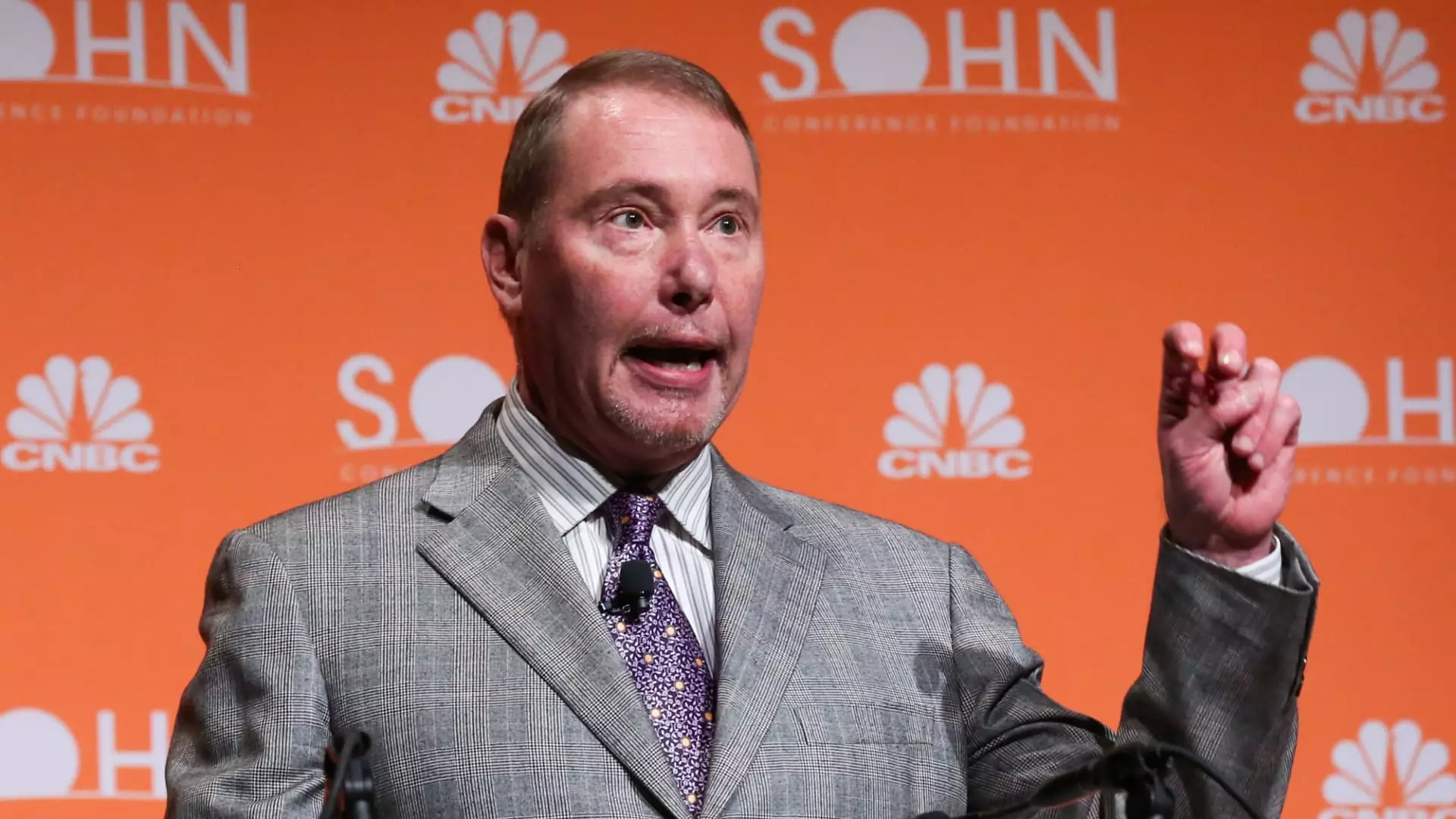In a recent interview, DoubleLine Capital CEO Jeffrey Gundlach provided insightful commentary on the trajectory of interest rates heading into 2025. His predictions, articulated on CNBC’s “Closing Bell,” illustrate a cautious stance regarding future Federal Reserve rate adjustments. According to Gundlach, the chance of only a single rate cut is probable, with two being the upper limit he envisions for the upcoming year. This assessment comes against a backdrop of a robust economic environment where the Fed appears to be taking a measured approach to its monetary policy.
On Wednesday, the Federal Reserve maintained its existing interest rates after implementing three consecutive cuts to conclude the previous year. Fed Chair Jerome Powell has made it clear that any adjustments to the monetary policy will not be hastened, emphasizing that the economy’s current strength justifies this deliberate approach. Gundlach echoed this sentiment, suggesting that the Fed will require significant evidence of fluctuations in labor market conditions and inflation before considering further rate cuts. He indicated a belief that there won’t be an immediate rate decrease in the forthcoming Fed meetings, aligning with Powell’s rationale that a stable unemployment rate diminishes the urgency for policy relaxation.
While discussing interest rates, Gundlach expressed his conviction that long-duration Treasury yields have not yet reached their peak. He pointed out that the benchmark 10-year rate has already witnessed a rise of approximately 85 basis points since the Fed initiated its first cut last year. This perspective suggests that the market could see additional upward movement in long-term rates. Gundlach’s analysis raises essential questions about the current valuation of long-term assets and whether the potential for further increases in rates might impact investment decisions significantly.
Given his outlook on interest rates, Gundlach advised caution with high-risk assets. His concerns are grounded not only in anticipated fluctuations in long-term interest rates but also in the perception of high asset valuations in the market. With rates likely to rise further, the risk-return profile of such investments could shift dramatically, leading to heightened volatility. This warning serves as a critical reminder for investors to assess their portfolios and risk exposure in a shifting economic landscape.
As we look toward 2025, Gundlach’s nuanced perspective underlines the complexities of the current economic landscape. His predictions and analysis of the Federal Reserve’s cautious stance offer vital insights for investors navigating these uncertain waters. As the market adapts to potential changes in interest rates, it will become increasingly important for investors to remain vigilant and informed, particularly regarding the valuations of long-term assets and their implications for overall portfolio strategy. The necessity for a careful and informed approach has never been more apparent, with reliance on data becoming crucial for future investment decisions.

